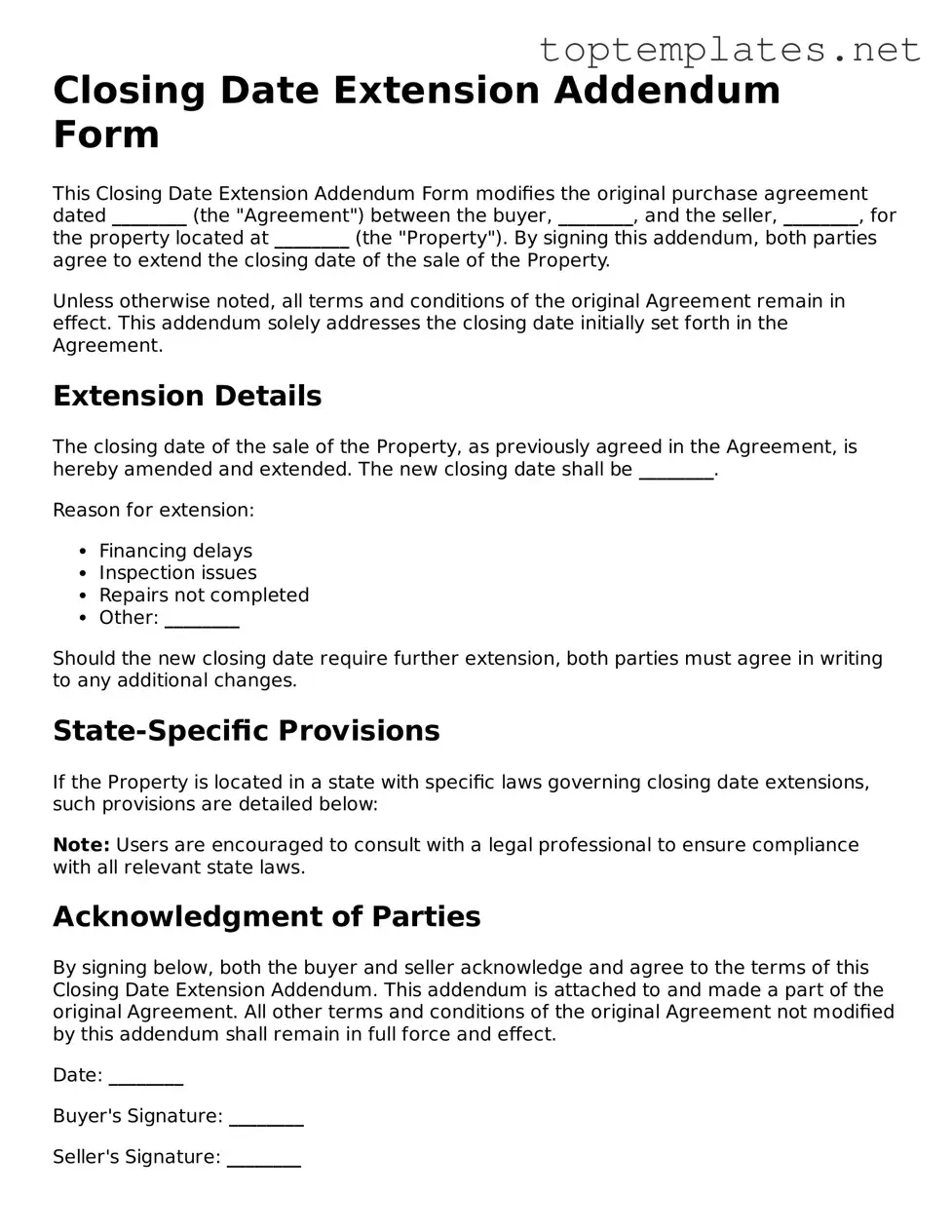Closing Date Extension Addendum Form
This Closing Date Extension Addendum Form modifies the original purchase agreement dated ________ (the "Agreement") between the buyer, ________, and the seller, ________, for the property located at ________ (the "Property"). By signing this addendum, both parties agree to extend the closing date of the sale of the Property.
Unless otherwise noted, all terms and conditions of the original Agreement remain in effect. This addendum solely addresses the closing date initially set forth in the Agreement.
Extension Details
The closing date of the sale of the Property, as previously agreed in the Agreement, is hereby amended and extended. The new closing date shall be ________.
Reason for extension:
- Financing delays
- Inspection issues
- Repairs not completed
- Other: ________
Should the new closing date require further extension, both parties must agree in writing to any additional changes.
State-Specific Provisions
If the Property is located in a state with specific laws governing closing date extensions, such provisions are detailed below:
Note: Users are encouraged to consult with a legal professional to ensure compliance with all relevant state laws.
Acknowledgment of Parties
By signing below, both the buyer and seller acknowledge and agree to the terms of this Closing Date Extension Addendum. This addendum is attached to and made a part of the original Agreement. All other terms and conditions of the original Agreement not modified by this addendum shall remain in full force and effect.
Date: ________
Buyer's Signature: ________
Seller's Signature: ________
State of ________
This form is not a legal document. For legal advice regarding your situation, please consult a licensed attorney.
